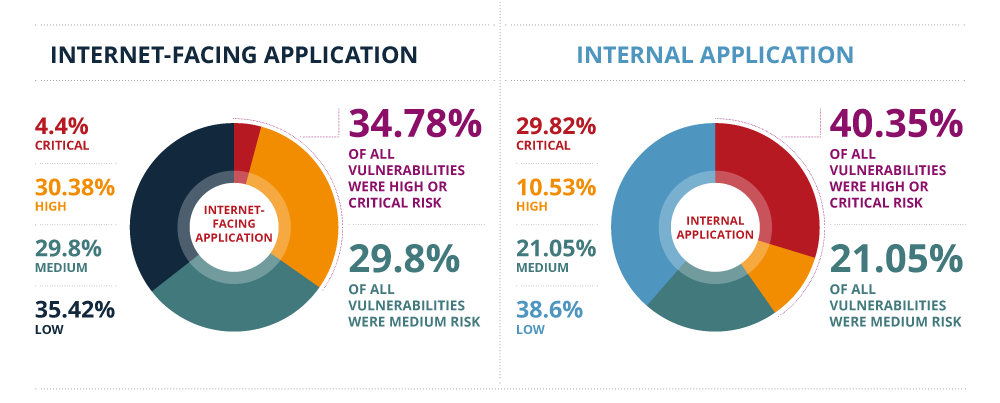Secure Coding: Mitigating the Top Software Vulnerabilities

Introduction
Secure coding is a critical aspect of software development that aims to minimize vulnerabilities and protect applications from potential threats. In today’s interconnected world, where cyber attacks are becoming increasingly sophisticated, it is essential for developers to prioritize security measures during the coding process.
This blog post will explore the top software vulnerabilities that developers need to be aware of and provide practical tips on how to mitigate these risks through secure coding practices.
1. Cross-Site Scripting (XSS)

XSS is a common vulnerability that allows attackers to inject malicious scripts into web pages viewed by users. To mitigate XSS attacks, developers should implement input validation and output encoding techniques. Additionally, utilizing security libraries and frameworks can provide an extra layer of protection against XSS vulnerabilities.
2. SQL Injection
SQL injection occurs when an attacker inserts malicious SQL statements into an application’s database query. To prevent SQL injection, developers should use parameterized queries or prepared statements. These techniques ensure that user input is properly sanitized and treated as data rather than executable code.
3. Cross-Site Request Forgery (CSRF)
CSRF attacks trick users into performing unintended actions on a website without their knowledge or consent. Developers can mitigate CSRF vulnerabilities by implementing measures such as using anti-CSRF tokens, validating referrer headers, and enforcing strict access controls.
4. Remote Code Execution
Remote code execution vulnerabilities allow attackers to execute arbitrary code on a target system. To prevent such vulnerabilities, developers should regularly update and patch software dependencies, implement strong input validation, and follow secure coding practices such as avoiding the use of eval() or similar functions.
5. Insecure Direct Object References (IDOR)
IDOR vulnerabilities occur when an application exposes internal references to sensitive data or resources. Developers can mitigate IDOR vulnerabilities by implementing proper access controls, validating user permissions, and using indirect references instead of direct object references.
6. Insecure Deserialization
Insecure deserialization vulnerabilities can lead to remote code execution or denial of service attacks. Developers should validate and sanitize serialized data, implement integrity checks, and avoid deserializing untrusted data to mitigate these vulnerabilities.
Summary
Software vulnerabilities pose significant risks to both individuals and organizations. Exploiting these vulnerabilities can lead to unauthorized access, data breaches, and other malicious activities. To ensure the security of software applications, developers must adopt secure coding practices that address the following top vulnerabilities:
- Injection Attacks: Preventing malicious code injection through proper input validation and parameterized queries.
- Broken Authentication and Session Management: Implementing strong authentication mechanisms and secure session management techniques.
- Cross-Site Scripting (XSS): Sanitizing user input and implementing output encoding to prevent XSS attacks.
- Security Misconfigurations: Regularly updating software components, configuring secure defaults, and minimizing unnecessary features.
- Sensitive Data Exposure: Encrypting sensitive data, securely storing passwords, and using secure communication protocols.
- XML External Entity (XXE) Attacks: Disabling external entity processing and validating XML input to prevent XXE vulnerabilities.
- Broken Access Control: Implementing proper access controls and authorization mechanisms to prevent unauthorized access.
- Security Logging and Monitoring: Implementing robust logging and monitoring systems to detect and respond to security incidents.
- Using Components with Known Vulnerabilities: Regularly updating and patching software components to address known vulnerabilities.
- Insufficient Logging and Monitoring: Ensuring comprehensive logging and monitoring to detect and investigate security events.
By following secure coding practices and addressing these vuln Read Full Article erabilities, developers can significantly enhance the security of their software applications and protect sensitive data from potential threats.
- Q: What is secure coding?
- A: Secure coding refers to the practice of writing software code in a way that minimizes the potential for security vulnerabilities.
- Q: Why is secure coding important?
- A: Secure coding is important because it helps prevent software vulnerabilities that can be exploited by attackers to gain unauthorized access, steal data, or disrupt systems.
- Q: What are the top software vulnerabilities?
- A: The top software vulnerabilities include SQL injection, cross-site scripting (XSS), cross-site request forgery (CSRF), insecure direct object references, and security misconfigurations.
- Q: How can SQL injection be mitigated?
- A: SQL injection can be mitigated by using parameterized queries or prepared statements, input validation and sanitization, and least privilege access controls.
- Q: What is cross-site scripting (XSS) and how can it be mitigated?
- A: Cross-site scripting (XSS) is a vulnerability that allows attackers to inject malicious scripts into web pages viewed by other users. It can be mitigated by properly encoding user input, validating and sanitizing data, and implementing content security policies.
- Q: How can cross-site request forgery (CSRF) be mitigated?
- A: Cross-site request forgery (CSRF) can be mitigated by implementing anti-CSRF tokens, validating and sanitizing user input, and using secure session management techniques.
- Q: What are insecure direct object references?
- A: Insecure direct object references occur when a developer exposes a reference to an internal implementation object, such as a database key or file path, without proper access controls. Attackers can manipulate these references to access unauthorized resources. Mitigation involves implementing proper access controls and using indirect references.
- Q: How can security misconfigurations be prevented?
- A: Security misconfigurations can be prevented by following secure configuration guidelines, keeping software and systems up to date, disabling unnecessary services and features, and conducting regular security audits.

Hello, I’m Brayden Denman, a passionate and experienced Mobile App Developer specializing in Cloud Computing, Software Development, Mobile App Integration, and AI & Machine Learning. With a strong background in these fields, I strive to create innovative and user-friendly solutions that meet the ever-evolving needs of businesses and individuals.
Introduction Secure coding is a critical aspect of software development that aims to minimize vulnerabilities and protect applications from potential threats. In today’s interconnected world, where cyber attacks are becoming increasingly sophisticated, it is essential for developers to prioritize security measures during the coding process. This blog post will explore the top software vulnerabilities that…

Hello, I’m Brayden Denman, a passionate and experienced Mobile App Developer specializing in Cloud Computing, Software Development, Mobile App Integration, and AI & Machine Learning. With a strong background in these fields, I strive to create innovative and user-friendly solutions that meet the ever-evolving needs of businesses and individuals. Read More.
Recent Posts
- Challenges in Cross-Platform Digital Asset Search and Retrieval
- The Role of AI in Enhancing Digital Asset Retrieval
- Implementing Automation in Digital Asset Recovery Processes
- Digital Asset Retrieval: Addressing Security and Privacy Concerns
- Optimizing Metadata for Quicker Digital Asset Discovery
- Overcoming Barriers in Searching and Accessing Digital Assets
- Best Practices for Efficient Digital Asset Retrieval
- Harnessing the Power of Deep Learning: A Beginner’s Guide
- Scalability Issues in Large-Scale Machine Learning Projects
- Navigating the Ethical Challenges of AI Implementations
